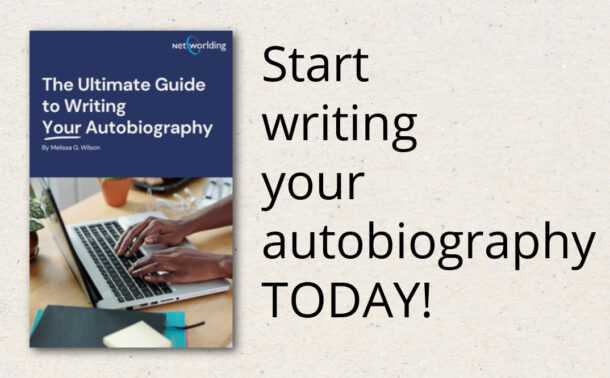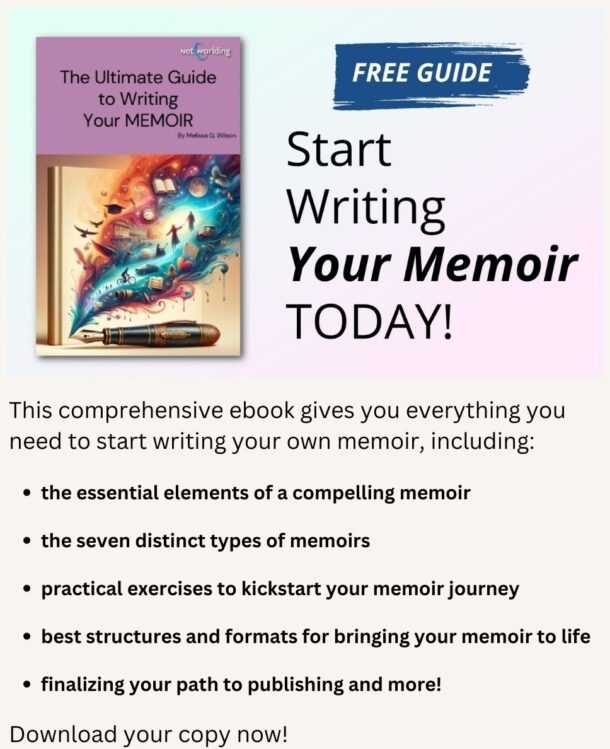9 Great Autobiography Writing Tips

There are plenty of reasons why you want to tell others the story of your life. Whether you’re trying to have your autobiography professionally published or you just want to keep it as a journal for your family and friends, these writing tips will help you create a narrative that is compelling and engaging. Here’s what you’ll want to do.
#1. Get used to the writer’s chair. If writing doesn’t come naturally to you, trying to force out 2,000 words per day can be rather difficult. Allow yourself some time to adjust to the writing process. If you only get 200 words out one day, then that’s fine. If you’re super productive and get 4,000 words out – then you’ve had an awesome day. Try to establish a regular workflow, but give yourself 3-4 weeks to get into the writing habit.
#2. Know your audience. Who do you think will want to write your autobiography? You may be telling the stories of your life, but you need to create those stories in such a way that your intended audience is going to be able to understand them. Construct your stories with a narrative rhythm that will keep people engaged while including your key topics here and there to keep the stories moving along.
#3. Develop one primary thesis. There must be one overall point that you’re trying to make with your autobiography. Now sure – there are lessons in each story or chapter that are worth telling as well but weave these individual lessons into one overall core concept. Keep coming back to that main point you’re trying to make. This will give more than authenticity to your stories… it will give the reader a purpose for taking the time to go through your autobiography from start to finish.
#4. It’s all about your memories. When you’re writing an autobiography, you may find that certain stories have been forgotten about. You can plot out every chapter, but when you begin writing, you may remember things that you feel are important to include as well. To stop the writing process from being overly choppy because of this [and it always happens with a first autobiography], you may wish to write a complete outline of your autobiography first. This can help you “jump-start” some memories that you may wish to share with others.
#5. Don’t forget to stay organized throughout the writing process. Many autobiographies feel like they’re more of a set of short stories because there isn’t any organization to the body text at all. You still need to include transitions within the narrative to help readers be able to move from story to story. Your narrative must remain consistent throughout the autobiography because it is essential you create a dialogue with the reader. If you’ve created an outline, they follow it as you write and you’ll find that staying organized isn’t really that difficult.
#6. Find your focus. This might be the most difficult part of the writing process when you’re creating an autobiography. Yes – staying on-point with your one main topic is important, but so is being able to stay within a writing zone. Eliminate the distractions that will take you away from your writing time. Shut down Facebook. Turn off your email. Turn off your iPhone if necessary. Put out your 2,000 words per day or whatever your goal happens to be and then turn everything back on. You’ll find that not only are you more productive when you can do this, but the quality of your writing will be better as well.
#7. Keep your readers engaged. This is a conversation with your reader. It’s important that you’d write as you talk in an autobiography. Otherwise, the narrative seems a little off to the reader and this will reduce their engagement levels with your stories. Use humor. Break up big chunks of text that might cause the reader to skim over them. You might even consider varying your sentence structures to give the reader something different to see from time to time. Just don’t make the stories monotonous or repetitive because that will cause readers to lose interest.
#8. If needed, consider using some writing tools to help get you started. Guess what? You’re already using a writing tool for inspiration if you’re reading this. Sometimes we writers need to look at the work of someone else to become inspired to do our own thing. Creativity is contagious and it will expand and grow the more you’re exposed to it. Don’t be afraid to look at other autobiographies, other writing resources, and even simple tips and tricks to write more words per day to work on developing your own unique narrative.
#9. Find a way that makes you stand out. Your story is unique, but does it stand out against the other life stories that are being written about right now? Ultimately a published autobiography must offer something that no other autobiography offers to engage new readers. Find this out about yourself and you’ll be able to write an amazing autobiography.
These autobiography tips aren’t going to help you write your stories word-for-word, but they will help you find a way to staple your pants to your chair and begin to tell your stories to your future readers. It takes a lot of work, maybe a few tears, and walking through some difficult memories, but remember this: you are amazing. Your story will be amazing.
Now get started writing it.


